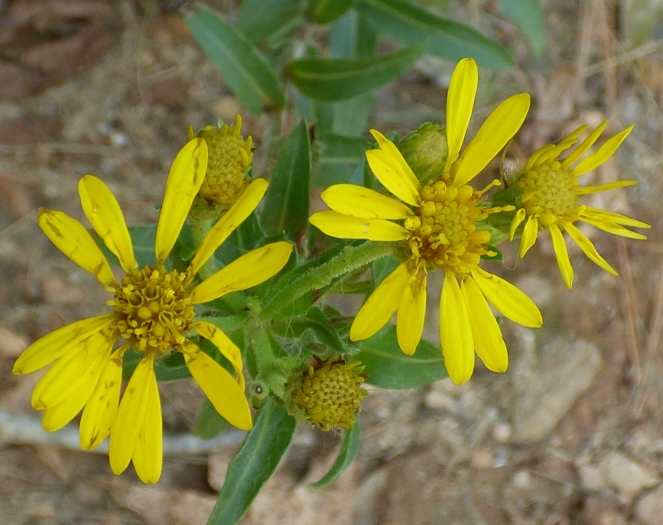Maryland Goldenaster
(Chrysopsis mariana)
Maryland Goldenaster (Chrysopsis mariana)
/
/

kcthetc1
Public Domain
Image By:
kcthetc1
Recorded By:
Copyright:
Public Domain
Copyright Notice:
Photo by: kcthetc1 | License Type: Public Domain | License URL: http://creativecommons.org/publicdomain/zero/1.0/ | Rights Holder: kcthetc1 | Publisher: iNaturalist | Date Created: 2020-09-22T15:10:36-07:00 |


















































Estimated Native Range
Summary
Chrysopsis mariana, commonly known as Maryland Goldenaster, is a perennial herb native to dry, sandy soils in open pine barrens, coastal plains, and roadsides in the southeastern United States. It typically grows one to two feet tall and wide, with a bushy habit. The plant features narrow, lance-shaped leaves and large, showy yellow flowers that bloom from late summer into fall, specifically from August to October. The flowers are arranged in flat-topped clusters and are notable for their silky, hairy stems, which have earned it the nickname "silkgrass."
Maryland Goldenaster is valued for its drought tolerance and its ability to thrive in poor, sandy soils, making it an excellent choice for xeriscaping and naturalistic plantings. Its bright yellow flowers add late-season color to gardens and attract pollinators such as bees and butterflies. It is often used in wildflower meadows, borders, and restoration projects. For successful cultivation, it requires full sun to part shade and well-drained soil. While it is generally low-maintenance, it can be susceptible to root rot if overwatered or planted in poorly drained soils.CC BY-SA 4.0
Maryland Goldenaster is valued for its drought tolerance and its ability to thrive in poor, sandy soils, making it an excellent choice for xeriscaping and naturalistic plantings. Its bright yellow flowers add late-season color to gardens and attract pollinators such as bees and butterflies. It is often used in wildflower meadows, borders, and restoration projects. For successful cultivation, it requires full sun to part shade and well-drained soil. While it is generally low-maintenance, it can be susceptible to root rot if overwatered or planted in poorly drained soils.CC BY-SA 4.0
Plant Description
- Plant Type: Herb
- Height: 1-2.5 feet
- Width: 1-2 feet
- Growth Rate: Moderate
- Flower Color: Yellow
- Flowering Season: Summer, Fall
- Leaf Retention: Semi-Deciduous
Growth Requirements
- Sun: Full Sun, Part Shade
- Water: Low, Medium
- Drainage: Fast
Common Uses
Bank Stabilization, Bee Garden, Bird Garden, Border Plant, Butterfly Garden, Deer Resistant, Drought Tolerant, Fragrant, Groundcover, Hummingbird Garden, Low Maintenance, Rock Garden, Salt Tolerant, Showy Flowers
Natural Habitat
Native to dry, sandy soils in open pine barrens, coastal plains, and roadsides in the southeastern United States
Other Names
Common Names: Maryland Golden-Aster
Scientific Names: , Chrysopsis mariana, Heterotheca mariana, Inula glandulosa, Chrysopsis mariana var. macradenia, Inula mariana, Chrysopsis mariana f. efulgens, Chrysopsis mariana f. mariana, Chrysopsis mariana var. mariana, Diplogon mariana
GBIF Accepted Name: Chrysopsis mariana (L.) Elliott